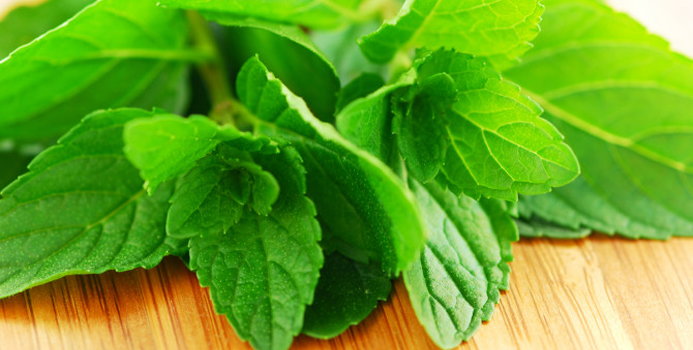You have very likely encountered peppermint herb in teas, toothpaste and chewing gum. Peppermint is also an ingredient in soups, salads, and stews. This herb is packed with nutrients and is used for a variety of purposes ranging from easing stomach cramps to refreshing your breath.
Background
Peppermint leaves may be found year-round, but thrive in warmer weather. There are about 25 species of mint. Peppermint is a hybrid of water mint and spearmint. You can distinguish between peppermint and spearmint by the color and shape of their leaves. Peppermint leaves are longer and less round than spearmint leaves. The two herbs are very similar in taste, with peppermint being stronger and spearmint more subtle.
Nutrients
Peppermint herb provides numerous nutrients. The list includes:
- Vitamins A, B2 and C
- Dietary fiber
- Iron
- Folate
- Calcium
- Magnesium
- Potassium
- Copper
- Omega-3 fatty acids
Healing Properties
The vitamin A in peppermint herb has been shown to decrease risks for certain cancers, such as colorectal cancer. The vitamin C in this herb works as an antioxidant and has been known to decrease cell damage caused by free radicals.
Peppermint herb calms and numbs the body. It is widely known for its ability to soothe an upset stomach. It is also useful in aiding digestion. Peppermint is a good remedy for headaches, nausea and menstrual cramps. Because of its calming effect, peppermint has also been used to treat anxiety.
Menthol is an active ingredient in peppermint. It is used as a decongestant and is effective in thinning mucus and breaking up phlegm. If you have a sore throat or a dry cough, you will find relief from peppermint. Studies have shown that peppermint kills certain types of viruses and bacteria.
Topical Remedies
Peppermint may also be used topically. It is useful as a remedy for poison ivy, poison oak or hives. As an ingredient in healing creams, it cools and soothes the skin. According to one study, when applied to the temples and forehead, peppermint reduces headache symptoms. You will also find peppermint as an ingredient in chest rubs designed to relieve cold symptoms.
Packaging and Availability
Peppermint is packaged and prepared in several different forms. The most common and easily available in grocery stores is peppermint tea, which is prepared using dried peppermint leaves. You can find loose peppermint in the vegetable section of your grocery store. Peppermint also comes in capsules that are coated to allow easy passage through the stomach and into the intestines. Peppermint tincture is made from peppermint oil and a small amount of leaf extract in an alcohol base. It is generally used for stomach and intestinal disorders. You will also find peppermint in the form of creams and topical ointments.
The peppermint herb's nutrients and healing properties make it a useful addition to both your diet and your medicine cabinet. You can drink it in teas, add it to salads and soups, and buy ready-made products containing peppermint that soothe and heal.



